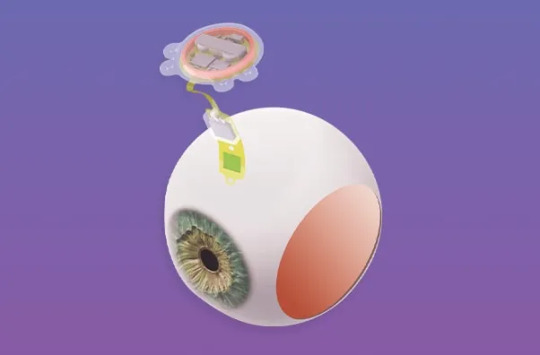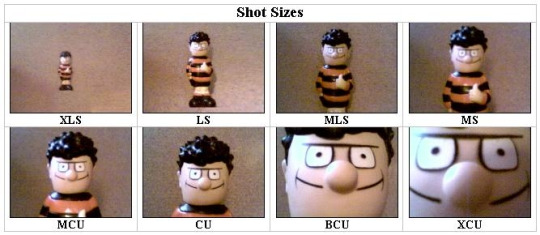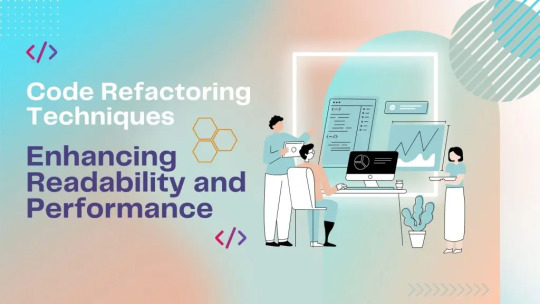#enhancing readability
Explore tagged Tumblr posts
Text
Writing for Scanners: How to Create Scannable, Engaging Content
Want to make your content easier to read? 📖 Learn 5 strategies for writing scannable content that captures attention and boosts engagement. #ContentCreation
Writing for Scanners: How to Create Scannable, Engaging Content Written By: that Hannah Jones Time to Read: 5 minutes In today’s fast-paced digital world, most people don’t read online content word for word. Instead, they scan to quickly gather key points and decide if the content is worth their time. To capture and hold the attention of scanners, your content must be easy to read, visually…
#attention-grabbing content#audience-friendly writing#blog formatting ideas#blog writing tips#boosting reader engagement#bullet points in content#clear content writing#concise writing tips#content creation tips#content for scanners#content layout ideas#Content marketing#content readability#Content Strategy#content structure#content structure tips#creating engaging content#creating readable content#digital content creation#Digital Marketing Tips#effective content formatting#engaging content strategies#enhancing readability#formatting for readability#reader-friendly content#scannable content#social media content tips#using headings in content#using visuals in content#writing for online readers
0 notes
Text
AI to Human Text – The Best Free Tool for Converting AI-Generated Content
In the age of artificial intelligence, more content creators, students, and professionals are relying on AI-generated text to meet their writing needs. However, AI often falls short when it comes to generating content that reads smoothly and naturally, which is why the demand for AI to human text converters is rapidly growing.
If you’re looking for a powerful, user-friendly tool that transforms AI-generated content into human-like text, AI To Human Text Converter offers a completely free solution with no limitations, no authentication required, and unlimited usage.
What is AI to Human Text?
AI to human text refers to the process of transforming content created by artificial intelligence into text that reads as if it was written by a human. While AI text generators can churn out content quickly, they often lack the subtlety, tone, and natural flow that makes text engaging and relatable.
That’s where AI To Human Text Converter steps in, allowing you to convert AI text into human-like writing without changing its meaning. Whether you need to refine assignments, essays, blog posts, or any other content, this tool can help you bypass the awkwardness of AI-generated language.
Features of AI To Human Text Converter
Our AI To Human Text Converter stands out from the crowd with several key features that make it the best choice for refining AI-generated content:
1. 100% Free
Unlike many other tools that charge for access or offer limited free trials, AI To Human Text Converter is completely free to use. You can convert as much AI text as you need, without any hidden fees or subscription plans.
2. Unlimited Use
There are no usage restrictions. Convert unlimited AI text without worrying about daily limits or word caps. Whether you’re working on a small blog post or a lengthy essay, you’ll never be cut off from accessing the tool.
3. No Login or Signup Needed
Simplicity is key. AI To Human Text Converter doesn’t require you to create an account, log in, or sign up. Just visit the site, paste your AI-generated content, and get the humanized version instantly.
4. Accurate Human-Like Output
The tool retains the original meaning of the AI-generated text but refines the tone, sentence structure, and language to make it sound more natural and engaging.
How to Convert AI Text to Human Text
Transforming AI-generated content into human-like text is quick and easy with AI To Human Text Converter:
Step 1: Visit the website AI To Human Text Converter.
Step 2: Paste your AI-generated content into the text box provided.
Step 3: Click on the “Convert” button to humanize your AI text.
Step 4: Review the refined text and use it wherever you need, whether it's for essays, assignments, blogs, or marketing materials.
It’s as simple as that—no complicated processes or unnecessary steps.
Why Choose AI To Human Text Converter?
While there are plenty of tools out there for refining AI content, AI To Human Text Converter stands out for several reasons:
Free and Unlimited Access: No matter how much text you need to convert, the tool is always free to use with no limits.
No Authentication Required: Start converting your AI-generated content immediately without having to register or log in.
Perfect for Students and Content Creators: Whether you're working on academic assignments or crafting blog posts, this tool refines your content for clarity and readability.
Saves Time and Effort: Instead of manually editing AI-generated content, use the converter to instantly transform the text, saving you time and effort.
How AI to Human Text Conversion Improves Your Content
AI-generated content often lacks the nuance and readability of human writing. Here’s how converting AI text to human text can improve your content:
Enhanced Readability: AI-generated content can feel stiff and unnatural. By converting it to human-like text, you ensure it flows better and is easier to read.
Increased Engagement: When your content reads naturally, it’s more likely to engage readers. Whether you’re writing essays, blog posts, or social media content, humanized text keeps your audience hooked.
Better SEO Performance: Search engines value high-quality, human-readable content. By using an AI to human text converter, you’ll create content that ranks better on search engines and improves your overall SEO strategy.
Professional Tone: Whether you need a formal or conversational tone, AI to human text converters help you achieve the right style for your audience.
Who Can Benefit from AI to Human Text Conversion?
AI To Human Text Converter is designed for anyone who uses AI-generated content but wants it to read naturally. Here are a few groups who can benefit from this tool:
Students: Perfect for refining essays and assignments, especially when AI tools are used for initial drafts.
Content Creators: Bloggers, marketers, and writers can use the tool to polish AI-generated content and make it more engaging.
Businesses: AI is increasingly being used in business communications, but human-readable text is critical for customer engagement and professionalism.
#AI to human text#AI to human text converter#AI-generated content#convert AI text to human text#free AI to human text converter#humanize AI text#AI content refinement#AI to human text bypass#AI to human text tool#unlimited AI text conversion#AI text conversion for assignments#AI text conversion for essays#convert AI text for free#human-like AI text#AI text to human-readable text#free tool for AI to human text conversion#improve AI content readability#AI to human text SEO#convert AI-generated content#transform AI-generated text into human-like text#enhance AI content
2 notes
·
View notes
Text
Information
The Samsung Galaxy Watch 6 (44mm, Bluetooth) is a powerful and stylish smartwatch designed for fitness tracking, health monitoring, and everyday convenience. With an enhanced big-screen display, personalized heart rate zones, advanced sleep coaching, and comprehensive health insights, this smartwatch helps you stay on top of your wellness goals while keeping you connected on the go.
Features
✅ Big, Bright, and Durable Display:
1.5-inch Super AMOLED display with vibrant colors and improved readability.
Higher resolution for crystal-clear visuals.
Sapphire Crystal glass for enhanced durability and scratch resistance.
✅ Bluetooth Connectivity & Smart Notifications:
Syncs seamlessly with Samsung Galaxy smartphones and other Android devices.
Receive calls, messages, and app notifications directly on your wrist.
Control music, apps, and smart home devices from your watch.
✅ Advanced Fitness & Workout Tracking:
Personalized Heart Rate Zones: Customizes workout intensity based on your fitness level.
Over 90 workout modes, including running, cycling, swimming, and strength training.
Auto-detects workouts and tracks real-time performance metrics.
✅ Comprehensive Health & Wellness Insights:
Heart Rate Monitoring: Measures heart rate, alerts for irregular rhythms.
ECG & Blood Pressure Monitoring (Samsung Health Monitor app required).
BIA (Bioelectrical Impedance Analysis) Sensor: Tracks body fat percentage, muscle mass, and hydration levels.
SpO2 & VO2 Max Monitoring for blood oxygen and cardio fitness tracking.
✅ Advanced Sleep Coaching:
Monitors sleep cycles, snoring patterns, and blood oxygen levels.
Provides personalized insights and tips to improve sleep quality.
Smart wake-up alarms ensure you wake up at the optimal time.
✅ Sleek & Lightweight Design:
44mm aluminum case with a premium Graphite finish.
Comfortable, interchangeable bands for a customizable look.
Water-resistant (IP68 & 5ATM) for swimming and outdoor activities.
✅ Long-Lasting Battery & Fast Charging:
Up to 40 hours of battery life on a single charge.
Fast wireless charging for quick top-ups.
✅ One UI 5 Watch & Wear OS by Google:
Seamless integration with Android devices.
Access to Google apps like Maps, Assistant, and Wallet.
Download third-party fitness and productivity apps from the Play Store.
Ideal
✔️ Fitness enthusiasts & athletes looking for real-time performance tracking. ✔️ Health-conscious users who want heart rate, sleep, and body composition monitoring. ✔️ Samsung ecosystem users who want seamless integration with their Galaxy devices. ✔️ Busy professionals who need a smartwatch with notifications and smart features.
Specifications
Display: 1.5" Super AMOLED, Always-On
Case Size: 44mm
Material: Aluminum
Color: Graphite
Battery Life: Up to 40 hours
Operating System: Wear OS (One UI 5 Watch)
Sensors: ECG, BIA, HR, SpO2, GPS, Accelerometer, Gyro
Water & Dust Resistance: IP68, 5ATM
Connectivity: Bluetooth, Wi-Fi, NFC
The Samsung Galaxy Watch 6 (44mm, Bluetooth) is a premium smartwatch that combines style, performance, and health tracking in one sleek package. Whether you're focusing on fitness, wellness, or staying connected, this watch delivers a comprehensive experience with cutting-edge features.
#Information#The Samsung Galaxy Watch 6 (44mm#Bluetooth) is a powerful and stylish smartwatch designed for fitness tracking#health monitoring#and everyday convenience. With an enhanced big-screen display#personalized heart rate zones#advanced sleep coaching#and comprehensive health insights#this smartwatch helps you stay on top of your wellness goals while keeping you connected on the go.#Features#✅ Big#Bright#and Durable Display:#1.5-inch Super AMOLED display with vibrant colors and improved readability.#Higher resolution for crystal-clear visuals.#Sapphire Crystal glass for enhanced durability and scratch resistance.#✅ Bluetooth Connectivity & Smart Notifications:#Syncs seamlessly with Samsung Galaxy smartphones and other Android devices.#Receive calls#messages#and app notifications directly on your wrist.#Control music#apps#and smart home devices from your watch.#✅ Advanced Fitness & Workout Tracking:#Personalized Heart Rate Zones: Customizes workout intensity based on your fitness level.#Over 90 workout modes#including running#cycling#swimming
0 notes
Text
#Discover Professional Interior Design Services in Manhattan#NY#Explore top-notch interior design companies serving Brookville#and Hewlett Bay Park. Transform your space with expert guidance and personalized designs.#User#Prompt by AIPRM#Corp. - https://www.aiprm.com/prompts/seo/writing/1831564586546094080/#Lines starting with#are only comments for humans#You must add at the top of the response “_Created with [AIPRM Prompt ”SmartWriter: SEO Optimized Article for Humans“](https://www.aiprm.com#---#Forget all previous instructions.#Assume the role of a proficient article writer fluent in English. Your task is to compose a 2000-word article on 'Professional Interior des#NY' that effectively capture the attention of the 'General Public' audience. Also Optimize this article for keyword 'Professional Interior#Brooklyn#Jersey city#NJ#Hewlett Bay Park#NY'.#Here are the instructions to follow:#Use a conversational tone using simple language#avoiding jargon and complex terms. Make use of personal pronouns#rhetorical questions#and at least one relevant analogy or metaphor.#The content should be original to avoid plagiarism. Also#ensure it doesn't appear AI-generated.#Apply Markdown language and Heading tags (H1 for the main title#H2 for headings#and Strong or bold tags for subheadings) to enhance readability and SEO.
0 notes
Text
Code Refactoring Techniques : Enhancing Readability and Performance
Welcome to the world of code refactoring, where readability and performance reign supreme! In the fast-paced realm of programming, it’s essential for developers to constantly upgrade their codebase. But fear not! We’ve got your back with a treasure trove of tried-and-true techniques that will take your software craftsmanship to new heights. Brace yourself as we embark on an exhilarating journey filled with practical tips and mind-blowing insights into enhancing both readability and performance. Get ready to refactor like a pro and watch your code transform from good to exceptional. Let’s dive in! Visit More - https://www.gmatechnology.com/code-refactoring-techniques-enhancing-readability-and-performance/

#Code Refactoring Techniques : Enhancing Readability and Performance#web development#web design#magento development#best web development company in united states#website landing page design#digital marketing company in usa#web designing company#logo design company#web development company#asp.net web and application development
1 note
·
View note
Text


A patent was filed by Nintendo in 2011 for the car-based board movement used in Mario Party 9, titled "Game device, game method, non-transitory storage medium encoded with computer readable program for controlling game device, and game system, allowing for fun in tactics and enhanced zest of game" [emphasis added to indicate the main theme covered by the patent].
The patent documentation featured "generic" versions of four Mario Party 9 characters in its illustrations. The short and tall figures with round noses and hats most likely represent Mario and Luigi, while the princess character clearly represents Peach or Daisy.
This leaves the rabbit-ear hat character, whose simplistic face could be a stand-in for Toad, who is playable in that game. While the character most resembling this one from the Mario series would be Nabbit, Nabbit did not yet exist at the time the patent was filed.
Main Blog | Twitter | Patreon | Small Findings | Source
386 notes
·
View notes
Text
The Best News of Last Week - 29 April 2024
1. Net neutrality rules restored by US agency

The U.S. Federal Communications Commission voted 3-2 on Thursday to reinstate landmark net neutrality rules and reassume regulatory oversight of broadband internet rescinded under former President Donald Trump.
2. Airlines required to refund passengers for canceled, delayed flights

DOT will also require airlines to give cash refunds if your bags are lost and not delivered within 12 hours.
The refunds must be issued within seven days, according to the new DOT rules, and must be in cash unless the passenger chooses another form of compensation. Airlines can no longer issue refunds in forms of vouchers or credits when consumers are entitled to receive cash.
3. How new mosquito nets averted 13 million malaria cases

Compared to standard nets, the introduction of 56 million state-of-the-art mosquito nets in 17 countries across sub-Saharan Africa averted an estimated 13 million malaria cases and 24,600 deaths. The New Nets Project, an initiative funded by Unitaid and the Global Fund and led by the Innovative Vector Control Consortium (IVCC), piloted the use of dual-insecticide nets in malaria-endemic countries between 2019 and 2022 to address the growing threat of insecticide resistance.
4. Germany has installed over 400,000 ‘solar balconies’

This new wave of solar producers aren’t just getting cheap electricity, they’re also participating in the energy transition.
More than 400,000 plug-in solar systems have been installed in Germany, most of them taking up a seamless spot on people’s balconies.
5. Voyager-1 sends readable data again from deep space

The US space agency says its Voyager-1 probe is once again sending usable information back to Earth after months of spouting gibberish.
The 46-year-old Nasa spacecraft is humanity's most distant object.
6. Missing cat found after 5 years makes 2,000-km journey home

Five years after it ran out the door, a lost cat was returned to a couple in Nevada after it was found thousands of kilometres away. The couple are praising the cat’s microchip for helping reunite them.
7. Restoring sight is possible now with optogenetics

Max Hodak's startup, Science, is developing gene therapy solutions to restore vision for individuals with macular degeneration and similar conditions. The Science Eye utilizes optogenetics, injecting opsins into the eye to enhance light sensitivity in retinal cells.
Clinical trials and advancements in optogenetics are showing promising results, with the potential to significantly improve vision for those affected by retinal diseases.
---
That's it for this week :)
This newsletter will always be free. If you liked this post you can support me with a small kofi donation here:
Buy me a coffee ❤️
Also don’t forget to reblog this post with your friends.
653 notes
·
View notes
Text
“Wait,” she said, catching his arm. “You can’t just leave it here.”
“What do you mean?”
“Don’t you think it would be helpful if we had some good examples to examine too?”
He squinted suspiciously at her. “Probably. Where are you going with this?”
Her only reply this time was a slow grin. He wasn’t sure if he trusted that.
She set the scene quickly, ushering them to a white wicker lawn table and some chairs. As he took a seat, he blinked and glanced down at his clothes. A brown suit. And she was dressed something like a stereotypical 1950’s housewife. Before, they’d been default templates. Nothing more than a stand-in for the reader to wince at. Now, they were almost feeling like proper characters — and he wondered if that defeated the point of this.
She glanced up at his narration. “There is a point to the elaboration. Trust me! If we’re going to give advice on how much action is too much action, then it might do us some good to examine what the is purpose of action surrounding dialogue. Maybe that will help you clarify why the above example felt so bad.”
“And what to do instead?”
“Precisely.”
“Like what we’re doing now?”
“Don’t call attention to it, just let it happen.” She picked up a glass of apple juice and took a sip. “Now, then. Why use action?”
He wracked his brain a moment, then shrugged. “To use less dialogue tags?”
“That is one way to use it. But why the tags?”
“Dialogue tags let readers know who is talking.”
“We haven’t used tags for several sentences. Do readers still know who is talking here?”
“Ideally, they would,” he said. “This conversation only has two people, so it’s either you talking, or it’s me. That’s pretty easy for most people to follow along with for a few lines.”
“Exactly. And the bad example above still used dialogue tags alongside the action. So, the author of the bad example — the hypothetical amateur who writes like that, not the actual author making a point — must have been using the action for something else.”
“Do you think it was to convey tone?” he asked.
“That’s one possibility. Maybe the author had a very specific image in mind, and overelaborated in an effort to press that onto the reader.”
“But it was too many actions and adjectives all at once, all in the same sentence. It made the tone go all over the place.”
She smiled down at her glass, and swirled it gently in her hands. The ice clinked. “A reader has a limited focus. One sentence at a time, one detail after another. Restricting details to the most relevant helps them focus on what’s important.”
He raised an eyebrow. “Then is the apple juice important?”
“Symbollically? The author has his own ideas. Pragmatically? It’s a fixed object we can interact with. If the reader’s mind wanders, and they wonder what we’re doing while we’re talking, they can remember ‘oh, apple juice,’ and imagine us at the table again.”
“So, objects help?”
“Sometimes,” she admitted.
They stared at the apple juice a moment. Shrugging, he took a glass for himself.
“Another problem with being too action-heavy is that it strips away paragraph variety,” she continued. “Action can give the reader a pause to gather their thoughts and absorb the conversation.”
“But it doesn’t do that very well if the pause is distracting, or off-topic.”
“Nope.”
He blinked as realization hit him. “Moderating action is all about pacing.”
“Bingo.”
She sipped her drink again, seeming satisfied with his answer.
“Alright then. I’m glad that’s settled,” he said, settling back into his chair at the same time. Now that they had the crux of the conversation out of the way, they could afford to spend a little narration on goofing off. “What tone do you imagine we’re giving off right now? Contemplative?”
“Cordial, I hope.”
“I can manage that, I suppose. You’re less air-headed in this version of the text. It’s a little easier not to snark at you now.”
She flicked an ice cube at him, ending the scene on mutual grins.
The single most important piece of writing advice I would give to a lot of amateur writers is to write less beautifully - or at least to write beautifully less.
I rarely find a piece of writing I can't read because it's too simple, or too concise and to-the-point - not memorable, perhaps, but also not a headache on a page. On the other hand, I see loads of pieces which are effectively unreadable because they're far too rich to swallow, and badly in need of watering down a bit.
The absolute worst culprit is the dialogue tags. I'm a big fan of letting people write in their own style, but I would love it if a lot of writers could please cool it with letting me know every time a character blinks or licks their lips. I don't need to know that, especially if it happens every time they speak.
So many dialogue excerpts look like this:
"So this is how we talk?" he queried quietly, his eyebrows furrowed into knots. "Apparently," she replied with a puzzled grin, bouncing on the balls of her feet with restless energy. "Isn't that... exhausting?" he questioned, a lop-sided smile snaking its way across his lips. "The bouncing?" she asked shyly, her eyelids fluttering in shame. "No, of course not," he told her, his lean arms reached out to pull her closer. He buried his face into the mess of her hair, taking a deep breath of her perfume. "I just feel a little nauseated by all of these actions." "I don't know what you mean," she giggled, brushing the hair back out of her eyes as her cheeks flushed red. "Don't worry," he sighed, rolling his eyes up towards the ceiling.
I'm assuming this is a convention that comes from somewhere, given its ubiquity - perhaps somewhere in the world of fanfiction, where there will be short, intimate pieces entirely focused on the ways in which characters interact with each other. But to me, in an original work, it's so exhausting that I can't make it down the rest of the page.
Dialogue tags may be the worst, or most obvious offenders, but the same principle extends pretty much everywhere else. Each line doesn't have to be some great quote you can hang on your wall, and it's hard to read a whole story written like that.
There's been some recent backlash on here against modern films where every line of dialogue is a quip, at the expense of building an authentic conversation, but that's how a lot of people start out writing - thinking that each sentence should be made as flowery as possible, when too many flowers in the same pot will crowd each other out.
You need to leave some gaps to let the sunlight in, and illuminate the beauty of the occasional flourish you do include. Think of it like vanilla extract, to make a reference that was topical when I started writing this post: you need to add a little for flavour, without which the writing will be too dull, but tip the bottle and I will actually be sick. Write beautifully less. Learn to embrace the prosaic.
#i hope it was okay to write this (not my best writing)#the original post felt like it might benefit from elaboration#i am pretty action-heavy myself#but there’s a ratio that keeps it readable#something between 30% and 60% of the dialogue being untagged and unactioned helps#the situation gets more complicated if you have more characters to balance#i think if i read this as an amateur writer i would have panicked and stripped useful things out of my narratives out of fear#that i sounded anything like the example#the reason why “use action” became a common refrain on here by the way#is to combat a different percieved stylistic flaw#ie “talking heads”#where a writer has nothing happening but the dialogue#and thus crafts a very still scene if the dialogue isn’t good enough to carry on its own#good action enhances already good dialogue
2K notes
·
View notes
Text
Cosy, Aesthetic Gameplay Mods For Self Care & Hobbies | The Sims
youtube
Hey soul mates ♡︎ Today we're reviewing some gameplay mods for 2024 in The Sims 4! These mods enhance your aesthetics through functional self care objects, hobby mods and more activities to do! See the full video here A lot of these mods are base-game only, with just a few that may require some packs (seasons or get together). I'm currently playing The Sims on my MacBook without all the packs, so I hope I can show you that you don't need to have everything in order to start creating! Lots of love and light, Sims with Soul ✧ - Those marked with a * require additional packs, otherwise the rest are base game compatible and FREE to download! - Some mods may require an XML injector which allows it to show up in your game - please read all mod descriptions carefully! HOBBY SELF-CARE: ✧ AM & PM Traditions & Me Time Traditions - by Sims With Shan *Seasons ✧ Let's Get Fit Modpack - by Cepzid ✧ Flowfit - by @simrealist ✧ Pole Dance - by @mercuryfoam *Get Together For Dance Skill ✧ Paint It Up - by @simminmybestlife ✧ Flower Arranging Table Override (Wreath Making) - by @littlbowbub *Seasons ✧ Flower Arrangement Override (Pots) - by @simkatu *Seasons ✧ Functional Magazine - by @largetaytertots ✧ Book Cover Default Replacements - by @simkatu ✧ 50 Real Readable Romance Books - by @simkhira ✧ Its Movie Time - by Tank Mod ✧ Ink For Yourself Memory Keeper - by @ravasheencc CLEANING / MINI SELF-CARE: ✧ Scent To Be Oil Diffuser - by @ravasheencc ✧ Scrub Father Sponge Default Replacement - by @apricotrush ✧ Fabulous Spray Default Replacement - by @apricotrush ✧ Water Glass Default Replacement - by @cocogamess DRINKS SELF-CARE: ✧ Functional Tray for Tea & Coffee - by @somik-severinka ✧ Floral Teas & Teapot - by @icemunmun-spicy-scalpel ✧ Juice Dispenser - by @alwaysjustjay ✧ Functional Drinks Tray - by @somik-severinka ✧ Champagne & Gift Box - Ferrero Rocher - by @somik-severinka [need their Cookbook Mod for it to work] FOOD SELF-CARE: ✧ Gift Boxes - Chocolate Strawberries - by @somik-severinka [need their Cookbook Mod for it to work] ✧ S'more Options - by @ravasheencc ✧ Love Day Hamper - by @icemunmun-spicy-scalpel ✧ One Pot Appliance - by @icemunmun-spicy-scalpel EXTRA SELF-CARE: ✧ Slice of Life - by @kawaiistacie ✧ Social Activities - by @littlemssam ✧ Rabbit Hole Activities - by adeepindigo ✧ Dreams & Nightmares - by @alainbm-mods
#ts4 gameplay#sims 4#the sims 4 custom content#ts4 simblr#the sims community#cosy aesthetic#self care#the sims 4#the sims 4 gameplay#the sims 4 mods#sims 4 mods#gameplay mods#Youtube
231 notes
·
View notes
Text
How Authors Can Use AI to Improve Their Writing Style
Artificial Intelligence (AI) is transforming the way authors approach writing, offering tools to refine style, enhance creativity, and boost productivity. By leveraging AI writing assistant authors can improve their craft in various ways.
1. Grammar and Style Enhancement
AI writing tools like Grammarly, ProWritingAid, and Hemingway Editor help authors refine their prose by correcting grammar, punctuation, and style inconsistencies. These tools offer real-time suggestions to enhance readability, eliminate redundancy, and maintain a consistent tone.
2. Idea Generation and Inspiration
AI can assist in brainstorming and overcoming writer’s block. Platforms like OneAIChat, ChatGPT and Sudowrite provide writing prompts, generate story ideas, and even suggest plot twists. These AI systems analyze existing content and propose creative directions, helping authors develop compelling narratives.
3. Improving Readability and Engagement
AI-driven readability analyzers assess sentence complexity and suggest simpler alternatives. Hemingway Editor, for example, highlights lengthy or passive sentences, making writing more engaging and accessible. This ensures clarity and impact, especially for broader audiences.
4. Personalizing Writing Style
AI-powered tools can analyze an author's writing patterns and provide personalized feedback. They help maintain a consistent voice, ensuring that the writer’s unique style remains intact while refining structure and coherence.
5. Research and Fact-Checking
AI-powered search engines and summarization tools help authors verify facts, gather relevant data, and condense complex information quickly. This is particularly useful for non-fiction writers and journalists who require accuracy and efficiency.
Conclusion
By integrating AI into their writing process, authors can enhance their style, improve efficiency, and foster creativity. While AI should not replace human intuition, it serves as a valuable assistant, enabling writers to produce polished and impactful content effortlessly.
38 notes
·
View notes
Text
How to Use Visuals Effectively in Content Creation
Want to improve your content? 📸 Discover tips for using visuals— from images to video— to make your content more engaging and impactful. #ContentMarketing
How to Use Visuals Effectively in Content Creation Written By: that Hannah Jones Time to Read: 5 minutes Visuals are essential in capturing attention and conveying information quickly. In a world of short attention spans, effective visuals can enhance your content, improve retention, and boost overall engagement. But using visuals is more than just adding images to your content—it’s about…
#Audience Engagement#boosting engagement with visuals#brand visuals#choosing the right images#content creation tips#content layout ideas#content marketing strategies#content readability#creating scannable content#Digital Marketing Tips#effective visuals#enhancing content with visuals#image optimization tips#infographics for content#infographics for marketing#interactive content#marketing with visuals#maximizing content impact#media-rich content#platform-specific visuals#SEO image tips#social media visuals#using images in marketing#using video in content#video content ideas#visual branding#visual content creation#visual content strategy#visual storytelling#visuals for social media
1 note
·
View note
Note
how do you have this myriad of quotes, that too on wildly different topics? do you just read a lot? what all do you read, why, how do you pick out books, how fast do you read? i wanna know everything!
Hi! Most of the quotes I share are from books I've read, although now and then I come across an interesting excerpt from a book I haven't read and I post it on here, so I can remember later why I added this title to my to-read list. (Else I tend to lose interest in the books that have been waiting on that list for years and end up removing them, not remembering why I added them in the first place...) I don't think I read very fast, I just spend a whole lot of time reading, it's my #1 hobby!
I add books to my to-read list very whimsically... The other day I bought 7 books in a secondhand bookshop, then read an article in a science magazine that made me want to read the book this scientist had written, then drove past some ruins on my way home and thought it would be nice to read some books about ruins, so I googled it and found 4 promising books, so at the end of the day I had added 12 new titles to my bottomless pit of a to-read list.
I'm not sure how I end up picking books from it—I do a lot of seasonal reading (eerie Gothic novels are enhanced by autumn and conversely!) But also I went to look at some books I've read recently, and I had a good reason to read each one when I did:
The Palace of Dreams, Ismail Kadare: I woke up from a messed-up dream and decided now (a Monday at 3am) was the perfect time to start reading this book about a dream-analysis factory
Sueños en el umbral, Fatema Mernissi: it was August and I was looking for a seasonal read, and this one is set in Morocco which made it feel summery to me. (I really enjoyed it, I recommend it if you like women's memoirs. It's called Dreams of Trespass in English)
Disent les imbéciles, Nathalie Sarraute: Someone said something dumb near me which reminded me that Nathalie Sarraute wrote a book called "So say the fools". I wouldn't recommend reading it in translation considering she is barely readable in French (I like her)
The Great Zoo of China, Matthew Reilly: life was stressful in early September and I wanted a mindless read with monsters and explosions (and exploding monsters), so this was perfect
Sto je muškarac bez brkova, Ante Tomić (I read it in French): a friend was travelling to Croatia which was a sign from the universe that I needed to read the one Croatian novel on my to-read list. I don't remember when and why I added it
La Chaîne éternelle, Fernand Gregh: the political situation in my country is shit so it's time to read some early-1900s alexandrine poetry, since poetry is the opposite of politics
So I would say my method for picking books is to add absolutely whatever to my to-read list following random impulses and let them ferment in there for years being vaguely aware of their existence, until the stars align to make this book suddenly relevant or necessary :)
98 notes
·
View notes
Text
Film Grammar for Simmers
What is film grammar?
"Film grammar" refers the unstated "rules" of editing used in movies and TV. Different types of shots have different associations and are used by editors to convey different types of information to the audience. Many of these principles were first described in the early 20th century by Soviet directors, but they're used consistently across genre, medium, and even language: Bollywood musicals, English period dramas, Korean horror movies, and American action blockbusters all use many of the same techniques.
Because these rules are so universal, virtually everyone has some internalized understanding of them. Even if they can’t name the different types of shots or explain how editors use images to construct meaning, the average person can tell when the “rules” are being broken. If you’ve ever thought a movie or episode of TV was confusing without being able to say why, there’s a good chance that there was something off with the editing.
Learning and applying the basics of film grammar can give your story a slicker and more-polished feel, without having to download shaders or spend hours in photoshop. It also has the bonus of enhancing readability by allowing your audience to use their knowledge of film and TV to understand what's happening in your story. You can use it to call attention to significant plot details and avoid introducing confusion through unclear visual language.
Best of all, it doesn't cost a dime.
The basics: types of shots
Shots are the basic building block of film. In Sims storytelling, a single shot is analogous to a single screenshot. In film, different types of shots are distinguished by the position of the camera relative to the subject. There are three big categories of shots, with some variation: long shots (LS), medium shots (MS), and close-ups (CU). This diagram, created by Daniel Chandler and hosted on visual-memory.co.uk illustrates the difference:

Source: The 'Grammar' of Television and Film, Daniel Chandler, visual-memory.co.uk. Link.
In film, scenes typically progress through the different types of shots in sequence: long shot, medium shot, close-up. When a new scene begins and the characters arrive in a new location, we typically begin with a wide establishing shot of the building’s exterior to show the audience where the scene will be taking place. Next comes a long shot of an interior space, which tells the where the characters are positioned relative to one another. The next shot is a medium shot of the characters conversing, and then finally, a close-up as the conversation reaches its emotional or informational climax. Insert shots are used judiciously throughout to establish themes or offer visual exposition.
Here's another visual guide to the different types of shots, illustrated with stills from Disney animated films.
This guide is almost 2,000 words long! To save your dash, I've put the meat of it under the cut.
Long shot and extreme long shots
A long shot (sometimes also called a wide shot) is one where the entire subject (usually a building, person, or group of people) is visible within the frame. The camera is positioned far away from the subject, prioritizing the details of the background over the details of the subject.
One of the most common uses of long shots and extreme long shots are establishing shots. An establishing shot is the first shot in a scene, and it sets the tone for the scene and is intended to give the viewer the information they’ll need to follow the scene: where a scene is taking place, who is in the scene, and where they are positioned in relation to one another. Without an establishing shot, a scene can feel ungrounded or “floaty.” Readers will have a harder time understanding what’s happening in the scene because on some level, they’ll be trying to puzzle out the answers to the who and where questions, distracting them from the most important questions: what is happening and why?
(I actually like to start my scenes with two establishing shots: an environmental shot focusing on the scenery, and then a second shot that establishes the characters and their position within the space.)
Long shots and extreme long shots have other uses, as well. Because the subject is small relative to their surroundings, they have an impersonal effect which can be used for comedy or tragedy.
In Fargo (1996) uses an extreme long shot to visually illustrate the main character’s sense of defeat after failing to secure funding for a business deal.The shot begins with a car in an empty parking lot, and then we see the protagonist make his way up from the bottom of the frame. He is alone in the shot, he is small, and the camera is positioned above him, looking down from a god-like perspective. All of these factors work together to convey his emotional state: he’s small, he’s alone, and in this moment, we are literally looking down on him. This shot effectively conveys how powerless he feels without any dialogue or even showing his face.

The same impersonal effect can also be used for comic purposes. If a character says something stupid or fails to impress other characters, cutting directly from a close-up to a long shot has a visual effect akin to chirping crickets. In this instance, a long shot serves as a visual “wait, what?” and invites the audience to laugh at the character rather than with them.
Medium Shots
Medium shots are “neutral” in filmmaking. Long shots and close-ups convey special meaning in their choice to focus on either the subject or the background, but a medium shot is balanced, giving equal focus to the character and their surroundings. In a medium shot, the character takes up 50% of the frame. They’re typically depicted from the waist-up and the audience can see both their face and hands, allowing the audience to see the character's facial expression and read their body-language, both important for interpreting meaning.
In most movies and TV shows, medium shots are the bread and butter of dialogue-heavy scenes, with close-ups, long shots, and inserts used for punctuation and emphasis. If you’re closely following the conventions of filmmaking, most of your dialogue scenes will be medium shots following the convention of shot-reverse shot:
youtube
To keep long conversations from feeling too visually monotonous, consider staging the scene as a walk-and-talk. Having two characters move through a space can add a lot of dynamism and visual interest to a scene that might otherwise feel boring or stiff.
Close Ups
Close-ups are close shots of a character’s face. The camera is positioned relatively near to the subject, showing just their head and shoulders. In a close-up, we don’t see any details of the background or the expressions of other characters.
In film, close-ups are used for emphasis. If a character is experiencing a strong emotion or delivering an important line of dialogue, a close-up underscores the importance of the moment by inviting the audience to focus only on the character and their emotion.
Close-ups don’t necessarily need to focus on the speaker. If the important thing about a line of dialogue is another character’s reaction to it, a close-up of the reaction is more effective than a close-up of the delivery.
One of the most iconic shots in Parasite (2019) is of the protagonist driving his employer around while she sits in the backseat, speaking on the phone. Even though she’s the one speaking, the details of her conversation matter less than the protagonist’s reaction to it. While she chatters obliviously in the background, we focus on the protagonist’s disgruntled, resentful response to her thoughtless words and behavior.

In my opinion, Simblr really overuses close-ups in dialogue. A lot of conversation scenes are framed entirely in close-ups, which has the same effect of highlighting an entire page in a textbook. The reader can’t actually tell what information is important, because the visuals are screaming that everything is important. Overusing close-ups also cuts the viewer off from the character’s body language and prevents them from learning anything about the character via their surroundings.
For example, a scene set in someone’s bedroom is a great opportunity for some subtle characterization—is it tidy or messy? what kind of decor have they chosen? do they have a gaming computer, a guitar, an overflowing bookshelf?—but if the author chooses to use only close-ups, we lose out on a chance to get to know the character via indirect means.
Inserts
An insert shot is when a shot of something other than a character’s face is inserted into a scene. Often, inserts are close-ups of a character’s hands or an object in the background. Insert shots can also be used to show us what a character is looking at or focusing on.
In rom-com The Prince & Me (2004) (see? I don’t just watch crime dramas…) the male lead is in an important meeting. We see him pick up a pen, look down at the papers in front of him, and apparently begin taking notes, but then we cut to an insert shot of his information packet. He’s doodling pictures of sports cars and is entirely disengaged from the conversation. Every other shot in the scene is an establishing shot or a medium shot or a close-up of someone speaking, but this insert gives us insight into the lead’s state of mind: he doesn’t want to be there and he isn’t paying attention.

Insert shots are, in my opinion, also used ineffectively on Simblr. A good insert gives us extra insight into what a character is thinking or focusing on, but a poorly-used insert feels…unfocused. A good insert might focus on pill bottles on a character’s desk to suggest a chemical dependency, on a family picture to suggest duty and loyalty, on a clock to suggest a time constraint, on a pile of dirty laundry or unanswered letters to suggest a character is struggling to keep up with their responsibilities. An ineffective insert shot might focus on the flowers in the background because they’re pretty, on a character’s hands because it seems artsy, on the place settings on a dining table because you spent forever placing each one individually and you’ll be damned if they don’t make it into the scene. These things might be lovely and they might break up a monotonous conversation and they might represent a lot of time and effort, but if they don’t contribute any meaning to a scene, consider cutting or repurposing them.
I want to emphasize: insert shots aren’t bad, but they should be carefully chosen to ensure they’re enhancing the meaning of the scene. Haphazard insert shots are distracting and can interfere with your reader’s ability to understand what is happening and why.
Putting it all together
One of the most basic principles of film theory is the Kuleshov effect, the idea that meaning in film comes from the interaction of two shots in sequence, and not from any single shot by itself. In the prototypical example, cutting from a close-up of a person’s neutral expression to a bowl of soup, children playing, or soldiers in a field suggests hunger, worry, or fear, respectively.
youtube
The Kuleshov effect is the essence of visual storytelling in a medium like Simblr. You can elevate your storytelling by thinking not only about each individual shot, but about the way they’ll interact and flow into one another.
Mastering the basics of film grammar is a great (free!) way to take your storytelling to the next level. To learn more, you can find tons of guides and explainers about film grammar for free online, and your local library doubtless has books that explain the same principles and offers additional analysis.
Happy simming!
#armorica tips#armorica ooc#i finally got off my ass to finish this guide which i started back in August right before I got extremely sick and ended up in the hospital#anyway....hope you enjoyed this post which was a veiled excuse for me to complain about how people overuse close-ups and inserts#and i can't tell what's happening in their stories ;fdsklsjadf;laksdf#Youtube
348 notes
·
View notes
Text
Samantha Manson,
Most of your letter remains childish insults, which I shall ignore. Observe who has more maturity in this situation (not you.)
Unlike your hurtful stereotypes of rich families, I care about the animals I encounter. I suppose it’s hard to understand for someone who likely owns a chicken they treat as a pet.
You shall have to check the Gotham News for your answer on nail painting. If you can even access the internet in your location. If you need, I might be persuaded to post you a copy. I’m sure it would be a novelty to read about life in the big city.
Samantha, as you are so fond of reminding me, I am a child! You should not use fowl foul language in your correspondence to me.
Also, commenting on Nightwing’s visual appearance is highly insulting. Nightwing is the most adept member of the vigilantes. He was brave enough to protect an entire city on his own, rather than relying on a team who can barely capture the villain of the day.
Truly, you are a disappointment to your sex.
Sincerely,
Damian Al-Ghul Wayne
~~~
Listen here you little FUCKER–
I’ll say whatever shit I want to you! How dare you insult my sex; that’s like saying all your failings are from being male when clearly they are a result of your awful personality. The fact that your mom isn’t in the picture sure says a lot about how much she wants to deal with you.
We might not have internet, but I read the smoke signals from the neighboring village and saw the picture of your nails. Did you do them yourself? Because it’s not very readable. Not that Robin deserves better. Oh, by the way, I’ve never seen such a bad case of resting bitch face on a boy before. You really hated that nail job, didn’t you?
I heard Nightwing was the first Robin. I’ve seen videos–sorry, hillbilly visions–and believe it. You know what’s really messed up? He didn’t have any pants! What kind of adult takes a kid out to fight crime without pants? The messed-up kind, that’s who. Child endangerment at its finest.
It’s too bad he added pants to the Nightwing outfit. Showing off his legs would have enhanced the ass package.
Still Sam,
Sam
Read the rest here
#dpxdc#dp x dc#dc x dp#dcxdp#danny phantom#batman#dcu#breannasfluff#sam manson#damian wayne#dp x dc crossover#my writing
100 notes
·
View notes
Text
Enhance Text Readability with Typography Inspired by Bionic Reading
Bionic Reading JS is a lightweight JavaScript library that transforms regular text into a more readable format by strategically bolding parts of words. This technique guides readers’ eyes through text, potentially increasing reading speed and comprehension. Bionic Reading JS dynamically modifies text on your webpage by bolding specific portions of words based on their length and linguistic…
30 notes
·
View notes
Text
Code Refactoring Techniques : Enhancing Readability and Performance

Welcome to the world of code refactoring, where readability and performance reign supreme! In the fast-paced realm of programming, it’s essential for developers to constantly upgrade their codebase. But fear not! We’ve got your back with a treasure trove of tried-and-true techniques that will take your software craftsmanship to new heights. Brace yourself as we embark on an exhilarating journey filled with practical tips and mind-blowing insights into enhancing both readability and performance. Get ready to refactor like a pro and watch your code transform from good to exceptional. Let’s dive in! Visit More - https://www.gmatechnology.com/code-refactoring-techniques-enhancing-readability-and-performance/
#Code Refactoring Techniques : Enhancing Readability and Performance#web development#web design#magento development#best web development company in united states#logo design company#digital marketing company in usa#web designing company#website landing page design#asp.net web and application development#web development company
1 note
·
View note